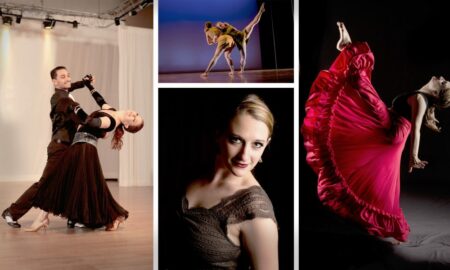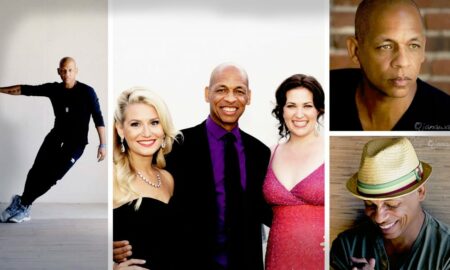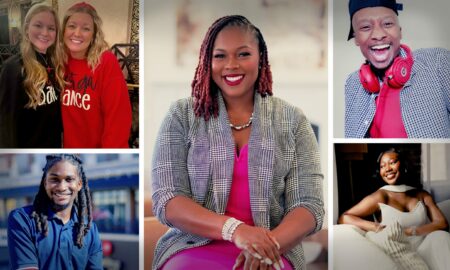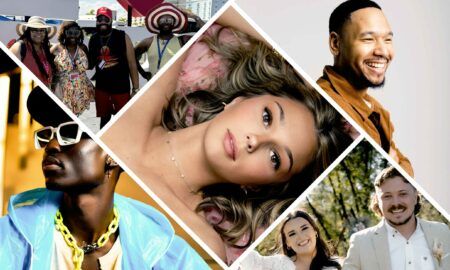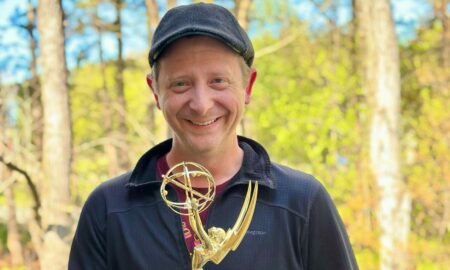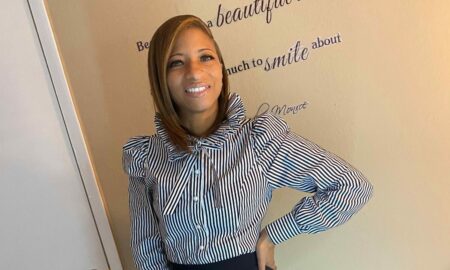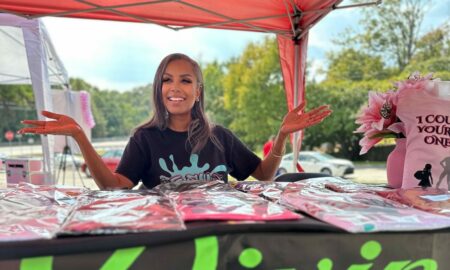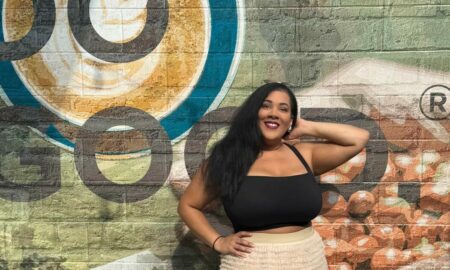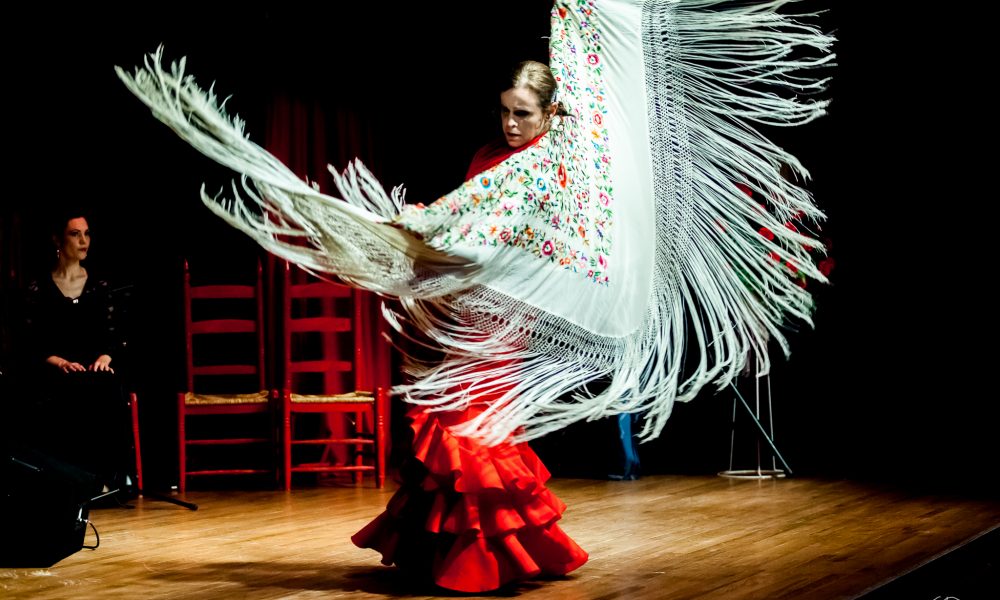

Today we’d like to introduce you to Julie Galle Baggenstoss.
Julie, can you briefly walk us through your story – how you started and how you got to where you are today.
As a child, my mother warned me, “Don’t dance. You will work when everyone else is playing.” She did not realize that dance was play for me, and as such, I have never worked a moment since I left a career in journalism to tell stories through movement.
I am a flamenco dancer, educator, and business leader, and I want to share with people how the arts are transformative. The Atlanta Flamenco Festival is my latest creation in communicating the many aspects of flamenco to audiences in the city where I live, as well as the South. It is a multi-week series that I helped shape as Executive Director of A Través, a role that represents a confluence that I could never have predicted. I am leveraging my experience as a teaching artist, one of the most difficult professions to define, to launch programs that I hope emphasize the notion that flamenco is for everyone.
As a lifelong dancer, I found flamenco when I was in my early twenties. I was trying to take Irish step classes in New Orleans but only received instruction in jigs and reels. When I pressed the instructor to teach me the percussive footwork that interested me, he looked down his nose and declared, “We only teach step classes to children.” In the silence that followed his comments, I heard the beating of flamenco shoes in the adjacent studio. I dropped the Irish classes and began dancing flamenco with Teresa Romero Torkanowsky in a small Uptown New Orleans studio across town. After my first class series, she invited me to join her company, and I began training three nights a week. For two of those weekly meetings, I danced in that same studio next to the jolly quiet Irish dancers, for nearly three years.
I was working as a television news producer at the time, and professionally, I was intrigued by the coordination of production teams. I was greatly inspired by my first news director, John Korbel, when he produced the live coverage of election returns in the Louisiana gubernatorial race in 1995, at our small television station KATC in Lafayette, LA. With complete calm and without a written plan, he jumped from one live reporting team to another, directed only by the incoming vote count, which was updated continuously for several hours in the tight and controversial race. One at a time, he put each team on alert, took it live, and then told it to wrap up before switching to another waiting live team. Theater production leverages the same characteristics: an ability to plan well yet remain flexible to improvise and maneuver unexpected problem-solving. While I love being on stage, I get high in the wings or in the production booth, where the shots are called, the ones that make the magic on stage. There is nothing more exciting than the anticipation of the last beats of a song, with the spotlight ready to turn a dancer’s final pose into a roar of applause.
Originally from New Orleans, my parents lived in Turkey and Spain before arriving to their humble Tennessee farmhouse just months before my birth. There, they were outsiders in a small Appalachian community. All of my life I have heard about the grit of entrepreneurs, the glory of clear communication, the value of non-standardized education, and the love that is created in inclusion. My mother worked as a school teacher who specialized in dance and adaptive physical education. My father taught business communication and organizational management as a university professor with strong interests in psychology, linguistics, and non-verbal communication. As a professional flamenco artist, I depend on a structure of non-verbal communication to work with musicians in improvisation during live performances. As a teaching artist, I have sliced that structure into conceptual blocks, which I adapt to create games in educational outreach, such as after-school programs for A Través. The point is to use the arts to train students to recognize the origins and variations that feed their own innovation. I cannot deny that my approach to dance has been influenced by my parents’ unconventional paths. They encouraged me to pursue my interest in dance as a child and teenager but guided me away from it in university studies.
I graduated from Louisiana State University with a degree in mass communication, and later I returned to dance by fortune, when I was living in Atlanta. I had left the CBS affiliate in New Orleans, for a position at Smyrna-based weather.com. I was supposed to bridge the on-air production team with the online coverage of storms. The excitement to work was electric when I arrived to the relatively new web company, but that changed in the early aughts. When the first of a few financial crises hit, we were downsized and I was offered a management position because content creation was being handed over to computers. That was when I realized that I needed to create, and a position in management would not give me that outlet. I traded my job benefits for the freedom of freelance life and a trip to Spain, hoping to write and if luck permitted, write about flamenco.
Nearly 15 years later, I published my first article. The essay, “Embodying Counterpoints: The work of Vicente Escudero and Israel Galvan in the theory of Severo Sarduy’s Ellipse,” discussed math, rhythm, and dance, and it was part of a volume that explored music and dance expression, entitled Spaniards, Natives, Africans, and Roma: Transatlantic Malagueñas and Zapateados in Music, Song, and Dance, published in 2019 and edited by K. Meira Goldberg, Walter Clark, and Antoni Pizà. A paper of that regard was of course the fruit of years of research, including an M.A. in Spanish at Georgia State University. Over a course of a decade, I slowly read and conducted interviews with artists and experts to understand how the story of Latin America fit into flamenco. As an art form, flamenco is said to have originated with the Roma (commonly referred to as Gitanos in Spanish), yet histories of human migration, dance, and music reveal more than such a one-sided perspective. I also took classes in Spain and the U.S.A., and I began teaching and performing flamenco. Exploration of flamenco from inside and outside of the art from led me to a place where I was ready to use rhythm, dance, music, and song lyrics as a vehicle to teach both children and adults.
Now, as a teaching artist, I explain to audiences, both young and old, about how one musical idea or dance trend moved from one place to another to express a preference of politics, war, or power, and then influenced the formation of flamenco. But, it is not all about suffering and tragedy. We celebrate together, learning flamenco dance, rhythm, and songs. By understanding how music and dance communicate, we can work as a group to find a common place artistically, while recognizing individual expressions of emotion. I can only now explain that to groups because I spent many summers and parts of some winters in Seville, where I took classes and humbly listened to artists and historians, to whom I owe everything for sharing their worlds with me. This work has not ended by any means. Rather, it continues, and children and adults in the state of Georgia are part of it, by way of (a través de) after school flamenco classes, scholarly seminars, community talks and classes for adults, and the Atlanta Flamenco Festival.
The Atlanta Flamenco Festival is my latest project, and it launched in 2019 as a production of A Través, Inc. The company was established in 2014, and it is the only non-profit in the state of Georgia that is dedicated solely to flamenco arts. As the Executive Director of A Través, I understand that launching this festival was a giant leap in our effort to scale our activity and gain prestige both in the arts and the flamenco world. We will follow it with a short performance series in February 2020 and the first Feria Atlanta, based on a spring tradition in Seville, Spain, in April-May, 2020. Through these projects, we are able to present world-class flamenco artists from Spain in performances that feature the best of tradition, as well as innovation, which will ultimately lead flamenco into its future. We bring flamenco artists to the state of Georgia to teach and perform in long-term projects, and we provide opportunities for people to participate in flamenco in events where the arts are naturally part of the celebration of friendship and culture.
We’re always bombarded by how great it is to pursue your passion, etc – but we’ve spoken with enough people to know that it’s not always easy. Overall, would you say things have been easy for you?
Being outside of Spain is a major challenge in my work. People have some unrealistic perceptions about flamenco, and it can be difficult to break stereotypes about the art form. I have corrected people that I am not a stripper; a mariachi band does not play my music; and yes, you can dance flamenco in tennis shoes. I do not mean to imply by any means that is an American thing, but I do attribute the confusion to the fact that we do not grow up with flamenco here, and our popular culture is full of misinformation. While it can be a learning moment for clients, there have been times when a client’s misconceptions have derailed my efforts.
It takes time to communicate the many layers of cultural expression that are part of flamenco and the reasons why those layers are relevant in the South, both in performance and educational settings. Clients and audiences want something fast, but we are looking for opportunities where we can share our work slowly or by way of repeat experiences. I have heard various reasons for this, and while I understand the limitations, I wish that they could be overcome in the very beginning stages of planning. I cherish the opportunities to collaborate in planning because the clients and audiences are most satisfied when that happens.
A large part of my work is in after-school programs on school campuses. We fortunately have some places to call home now, but we would like more. I find it challenging to navigate – with school shepherds – the bureaucracy that is in place to keep students safe and insure integrity in learning environments. I am continuously amazed at the patience and perseverance that is required to establish an ongoing after-school class. I am grateful for the teachers and school leaders who have vision and courage to trust me and walk that path with me.
So let’s switch gears a bit and go into the A Través, Inc. story. Tell us more about the business.
A Través is not a performing company or school, but a presenter of flamenco programming. We certainly have a vision of how we want to show flamenco in our market, but we do not promote a singular expression of the art form. Showcasing the depth and range of flamenco makes it all the more transformative for American audiences. With this in mind, A Través is the only 501c3 in Georgia that is dedicated 100% to flamenco arts, and we are the only company to work deeply with institutions to create flamenco projects that align with community arts standards, including long-term exit strategies. With a background in communication and Spanish studies, it is important to me personally that our projects introduce new perspectives, encourage curiosity, and increase creativity. There is now empirical data that shows that long-term contact between people who are unlike one another, increases creativity. This is one reason that we hire primarily Spanish artists in our projects, and we insist that they work in small groups.
We have two major operational goals: establish major semi-annual public events and form year-round long-term residencies for flamenco artists in Atlanta. The goal of long-term residencies came to mind when in 2012, I interviewed touring Spanish artists and asked them what, in their opinion, makes a city a successful environment for flamenco. They all felt that the presence of an artist from southern Spain was essential. We have never had this in Atlanta, and we hope to change the game by inviting flamenco artists to work in the area long-term.
The Atlanta Flamenco Festival became our first major semi-annual event in 2019, with a three-week series of performances and classes. Our festival is the next step in the evolution of our work, as it establishes Atlanta as a flamenco environment where a series of performances and classes can be not only well-received but sold out. It follows smaller-scale series, which we produced in 2016 and 2018. This private-public showing of flamenco is important, and it is something that we have practiced. In 2016, we invited flamenco artists from Jerez de la Frontera, Spain, to perform in an evening-length production, give university demonstrations, and teach classes to teens at the DeKalb School of the Arts. In 2018, we offered film screenings, a book talk, dance workshops and a live flamenco performance during a series focused on the African roots of flamenco. We plan to use our experiences from our smaller series and the festival to launch La Feria Atlanta in 2020, with a focus on connecting flamenco with the Spanish customs where dance and music are part of the celebration.
Has luck played a meaningful role in your life and business?
Luck helped me fill the 15 years that it took to publish my first article.
My best bad luck came during the years when I was pitching stories as a freelance writer, after leaving weather.com. I was only rejected. After about a year of such torture, I sat at lunch with a very successful freelance writer friend and her formerly successful freelance writer friend, who had moved to Atlanta from New York about six months earlier. Even though she had just met me at lunch, the Atlanta newbie did not stop bemoaning the fact that not a single pitch of hers had been accepted since relocating. She said, “You really have to love this job. Otherwise, it will really get you down because it is so full of rejection.” That was it. Later that day, I deleted an e-mail to pitch yet another article, and instead, I accepted an offer to teach and perform flamenco dance.
I have been blessed with many strokes of good luck since that serendipitous lunch, including subbing for a colleague at a university dance class only to find that it was an audition for a permanent position, which I was fortunately offered. Upon her departure from Atlanta, that same colleague asked me to assume management of a seminar to be taught by a visiting artist in Atlanta. In taking over that role, I met the visiting artist, who was flamenco scholar and dancer K. Meira Goldberg. She became my teacher and inspiration and guided me toward a scholarly path in the arts.
Pricing:
- We try to keep our concerts affordable. Tickets usually cost $10-$60.
- We work to lower tuition rates for resident artists, and typically charge $10-15 for a class series and $25/single class
Contact Info:
- Website: http://www.atravesarts.com
- Phone: 404-277-1499
- Email: info@atravesarts.com
- Facebook: https://www.facebook.com/atravesarts/

 Image Credit:
Image Credit:
Two photos with red dresses are by Erik Voss.
Suggest a story: VoyageATL is built on recommendations from the community; it’s how we uncover hidden gems, so if you or someone you know deserves recognition please let us know here.


